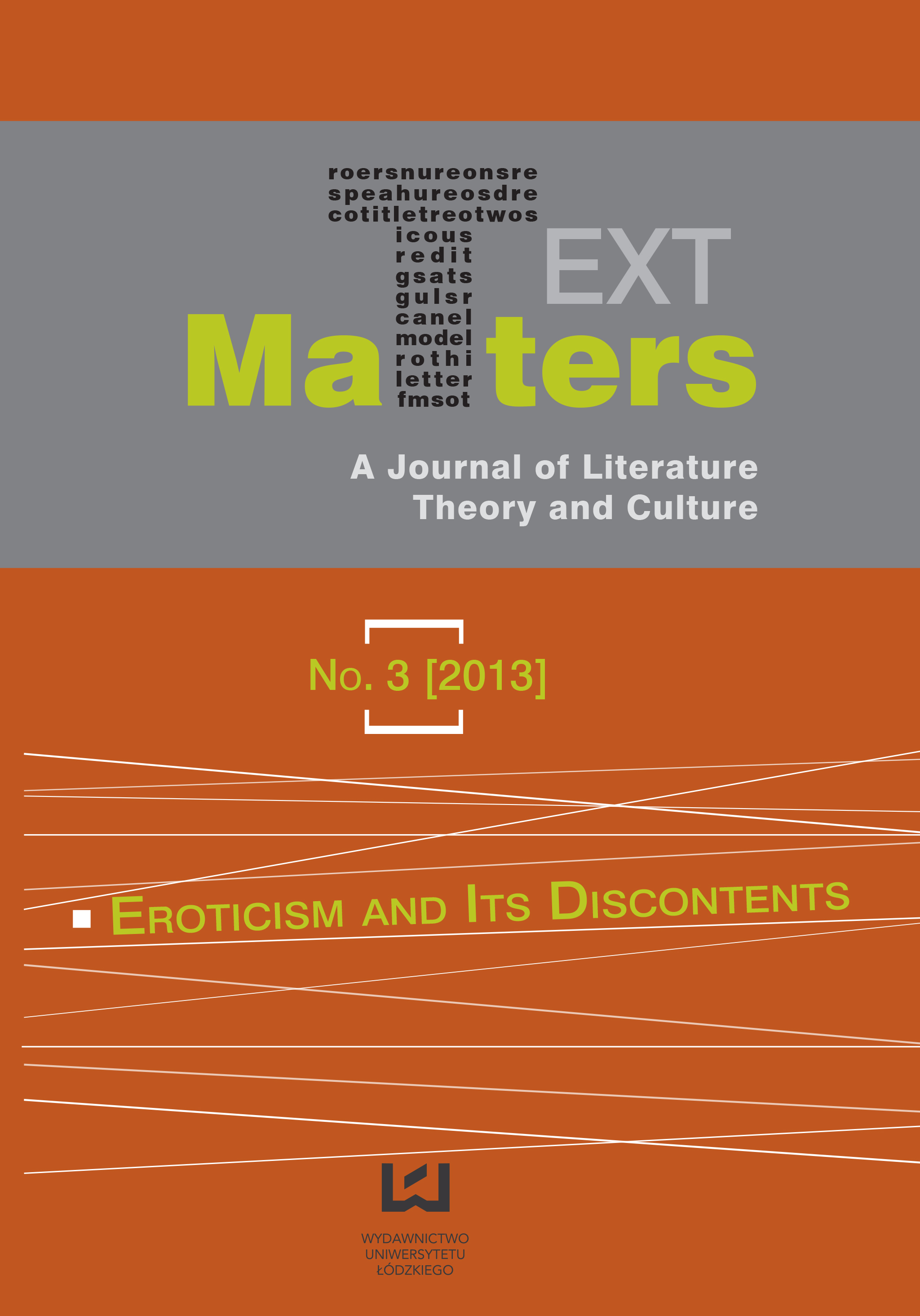Eroticism—Politics—Identity: The Case of Richard III
DOI:
https://doi.org/10.2478/texmat-2013-0028Abstract
Richard III’s courtship of Lady Anne in William Shakespeare’s King Richard III is a blend of courtly speech and sexual extravaganza. His sexual energy and power of seduction were invented by Shakespeare to enhance the theatrical effect of this figure and, at the same time, to present Richard as a tragic character. Richard’s eroticism in Act 1 Scene 2 makes him a complicated individual. Playing a seducer is one of the guises he uses to achieve his political aims on the one hand, and, on the other, the pose of a sexually attractive lover enables him to put his masculinity to the test. Throughout the scene Richard is haunted by his deformity that, together with his villainy, makes him a stranger to the world and an enemy to his family and the court. In order to overcome his self-image of a disproportional cripple he manifests his sexuality towards Anne to boost his self-esteem and to confirm that the lady will accept him despite his obvious physical shortcomings. This article uses Georges Bataille’s theory of eroticism and erotic desire to characterize Richard as a tragic individual and to explain the reasons behind his unexpected sexual behaviour in the seduction scene.
Downloads
References
Bataille, Georges. Erotism, Death and Sensuality. Trans. Mary Dalwood. San Francisco: City Lights, 1986. Print
Google Scholar
Bataille, Georges. The Accursed Share: Volumes II and III. Trans. Robert Hurley. New York: Zone, 1991. Print
Google Scholar
Bullough, Geoffrey, ed. Narrative and Dramatic Sources of Shakespeare. Vol. III. Earlier English History Plays: Henry VI, Richard III, Richard II. London: Routledge, 1960. Print
Google Scholar
Carson, Annette. Richard III: The Maligned King. Stroud, Gloucestershire: History, 2011. Print
Google Scholar
Chernaik, Warren. The Cambridge Introduction to Shakespeare’s History Plays. Cambridge: Cambridge UP, 2007. Print
Google Scholar
Clemen, Wolfgang. A Commentary on Shakespeare’s Richard III. Trans. Jean Bohheim. London: Methuen, 1968. Print
Google Scholar
Greenblatt, Stephen. Renaissance Self-fashioning. From More to Shakespeare. Chicago: U of Chicago P, 1984. Print
Google Scholar
Greenblatt, Stephen. “Richard III.” The Norton Shakespeare. Based on the Oxford Edition: Histories. New York: Norton, 1997. 319–26. Print
Google Scholar
Haeffner, Paul. A Critical Commentary on Shakespeare’s Richard III. Macmillan Critical Commentaries. London: Macmillan, 1966. Print
Google Scholar
More, Thomas. “History of King Richard III.” Richard III: The Great Debate. Ed. Paul Kendall. London: The Florio Society, [1513] 1965. 31–146. Print
Google Scholar
Ornstein, Robert. A Kingdom for a Stage. The Achievement of Shakespeare’s History Plays. Cambridge, MA: Harvard UP, 1972. Print
Google Scholar
Richardson, Samuel. Essays on Shakespeare’s Dramatic Characters of Richard the Third, King Lear, and Timon of Athens. London: Murray, 1784. Print
Google Scholar
Shakespeare, William. King Henry V. Ed. T.W. Craik. London: Arden Shakespeare, 2001. Print
Google Scholar
Shakespeare, William. King Henry VI. Part Three. Ed. John D. Cox and Eric Rasmussen. London: Arden Shakespeare, 2001. Print
Google Scholar
Shakespeare, William. King Richard III. Ed. Anthony Hammond. London: Arden Shakespeare, 2006. Print
Google Scholar
Skura, Meredith Anne. Shakespeare the Actor and the Purposes of Playing. Chicago: U of Chicago P, 1993. Print
Google Scholar
Downloads
Published
How to Cite
Issue
Section
License
Copyright (c) 2020 This content is open access.

This work is licensed under a Creative Commons Attribution-NonCommercial-NoDerivatives 4.0 International License.













